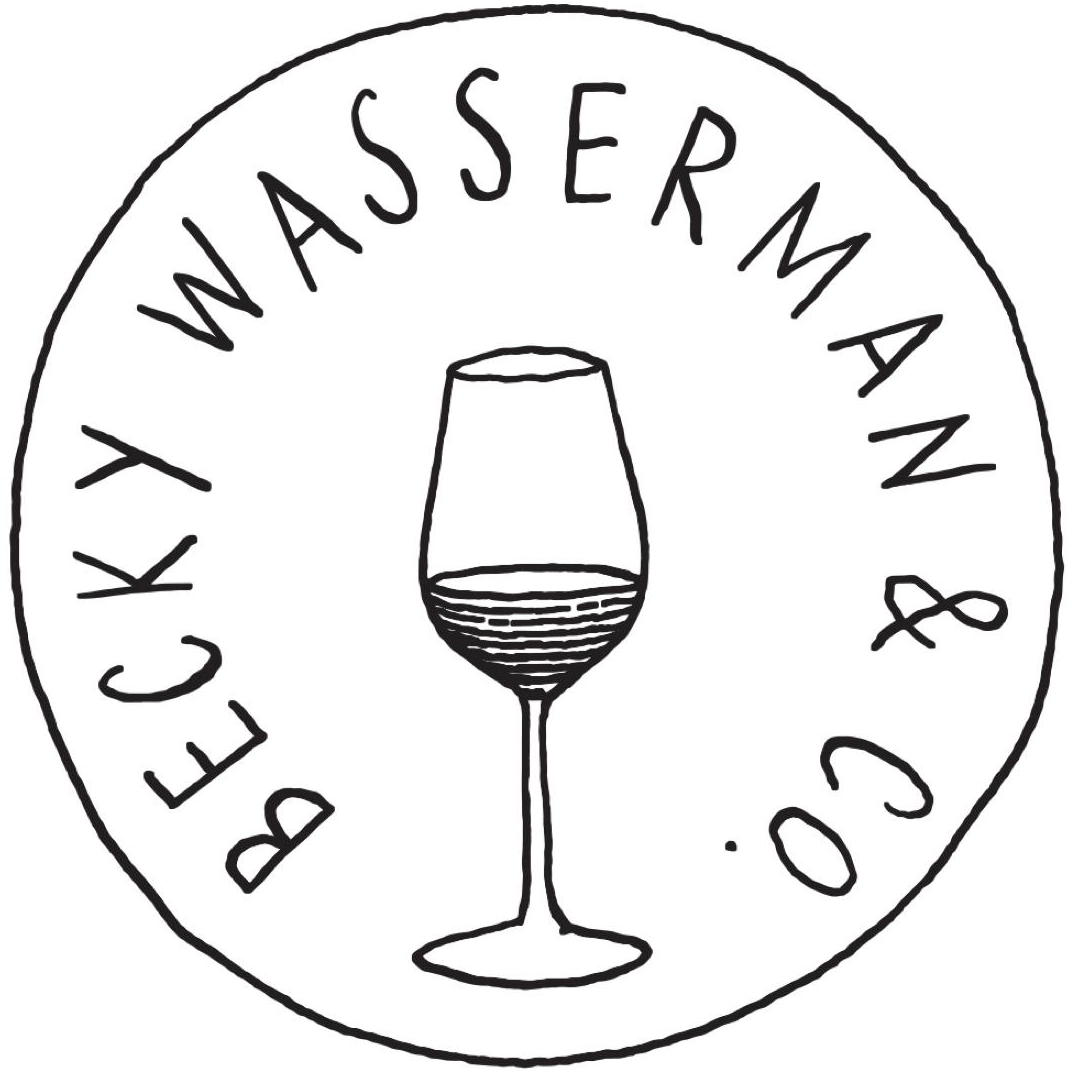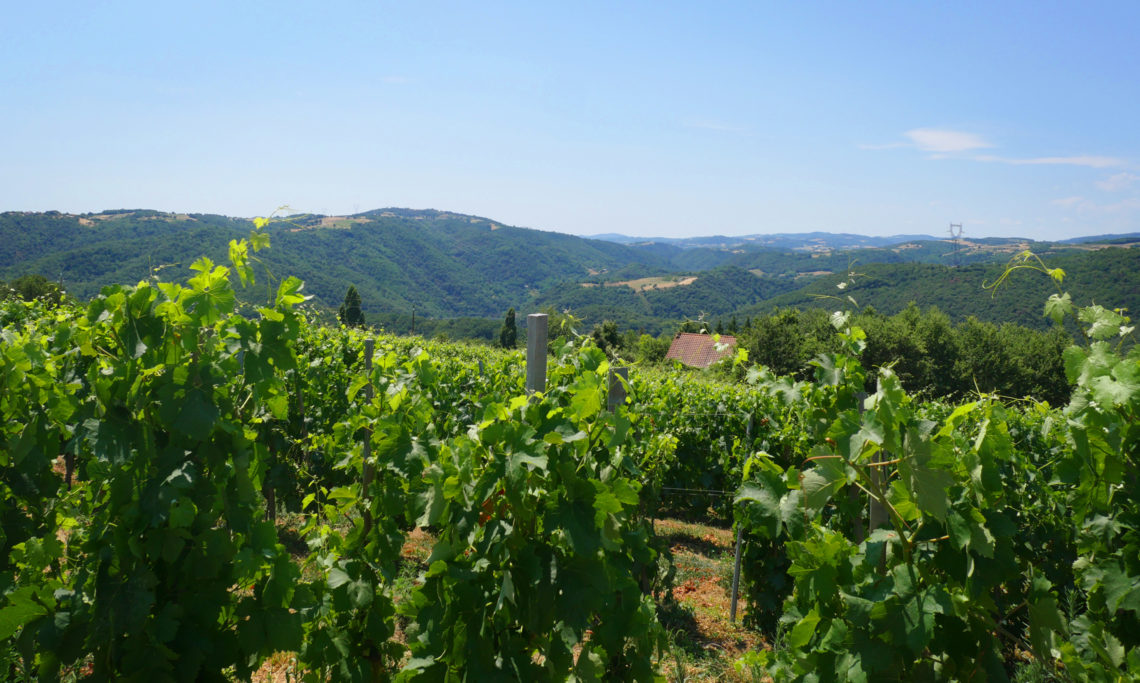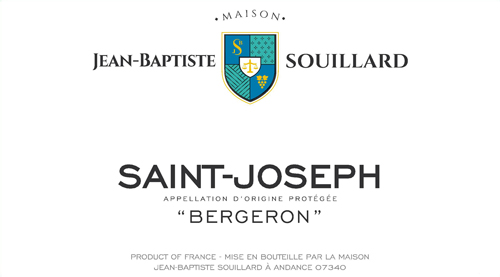Saint-Joseph Bergeron
At a Glance
- Size: 0.10 ha (0.25 ac)
- Variety: Syrah
- Vine Age: Planted in the early 1970s and 2000s
- Terroir: From Saint-Jean-de-Muzols, on the top of a gentle south-facing slope, 280 m elevation, the plateau is exposed to lots of sunlight but also cool northerly winds, deep, sandy soil with gneiss and mica-schist, surrounded by cherry and apricot trees.
- Viticulture: Sustainable
- Vinification: 40-100% whole-cluster, 2-3-week ambient yeast fermentation and maceration with pump-overs, aged for 13-18 months in used barrels, no fining or filtration, minimal SO2 added during vinification and adjusted after if needed.
Additional Info
Etymology: The northern Rhône is not only famous for its wines, but also for its cherry and apricot trees. Only three decades ago, fruit trees were more profitable that grapes. In a 2013 New York Times article by Eric Asimov, Jean-Louis Chave said, “Back then, a kilogram of apricots was worth more than a kilogram of grapes,” Recalling the years when his father, Gérard Chave, was coming of age, Chave stated, “Even in the 1980s, almost no estates were bottling their own wine.”
Bergeron is the region’s most famous apricot. We like it for two reasons: it was the result of a natural cross-pollination discovered by Mr. Bergeron in the 1920s, and it was named after a woman, Gabrielle Bergeron, who was either his wife or his daughter.
Site: Bergeron is located in Saint-Jean-de-Muzols. It is on the same slope, but much deeper in the valley, than the famed terroir of Saint-Epine. The vineyard is located at the top of the hill, where it flattens out to become a plateau. The gradient is, therefore, gentle, 10 to 15%. The elevation is at 350-360 meters, one of the highest in Saint-Joseph, which exposes it to cool winds. It faces south to southwest.
Geology: The abundance of pure white quartz stones indicates the presence of many quartz veins throughout the vineyard. The bedrock consists of highly metamorphosed gneiss and micaschist, that Jean-Baptiste refers to as the “granites de Tournon.”
Soils: The soil is deep (50-60 cm). It is light-colored, and very sandy. The vineyard only contains approximately 5% gravels and cobbles, most of which are angular and consist of decomposed gneiss/micaschist and quartz.
Jean-Baptiste: “It was undoubtedly planted to Bergeron apricots. This is genius terroir. We’re in Saint-Jean-de-Muzols, on granites de Tournon. Here (he points to the map) you have the desirable Côteau de Saint-Epine, where there were great old vignerons like Trollat. Bergeron is deeper in the valley. We’re on top of the hill at 200/250 meters altitude. The slope is Burgundian, with a 10 to 15% grade. We’re facing due south, but at this altitude we have the north wind. It’s really my kind of wine. It’s what I set out to do. I love the complexity, the balance.”
Paul Wasserman: “2014 Vintage: Peonies, talcum powder. On the palate, I am transported to a couple of years back at Septime, with Raj Parr, and a bottle of Saint-Joseph from the same commune I watched unfold over a couple hours. I loved the wine. But once it had fully stretched, I couldn’t help pining for just a tad more of a structural anchor on the finish, for a tad more energy. It made a beautiful arc, and then flopped. Jean-Baptiste’s Bergeron unfolds very slowly. It starts inky yet fresh, tannic. For a while it appears infatuated with sternness. But then it cuts the umbilical chord, sets its mind on terroir. The altitude takes over, infusing cool air in the texture, and layers. There is more chalk in the finish than Burgundy, but it’s very Burgundian in how it unfolds. And it remains energetic throughout.”
We are greatly indebted to Brenna Quigley for the geology and physical desciptions.
Wines
-
White
-
Rosé
-
Red
- Chatus
- Syrah
- Côte-Rôtie Côteaux de Bassenon
- Cornas Les Côtes
- Côte-Rôtie Tartaras
- Saint-Joseph
- Saint-Joseph Bergeron
- Saint-Joseph Château Morel
- Saint Joseph L'Echirol
- Saint-Joseph Janoune
- Crozes-Hermitage
- Crozes-Hermitage Les Baties
- Crozes-Hermitage Les Habrards
- Crozes-Hermitage Tenay
- Cornas Saint-Pierre


